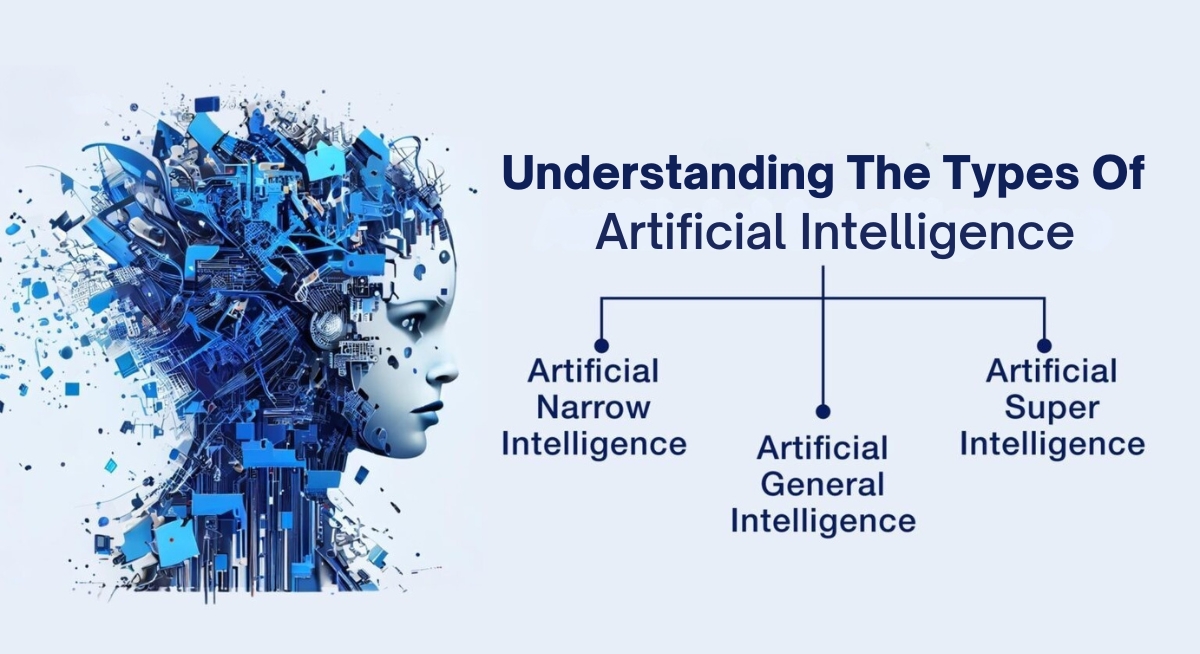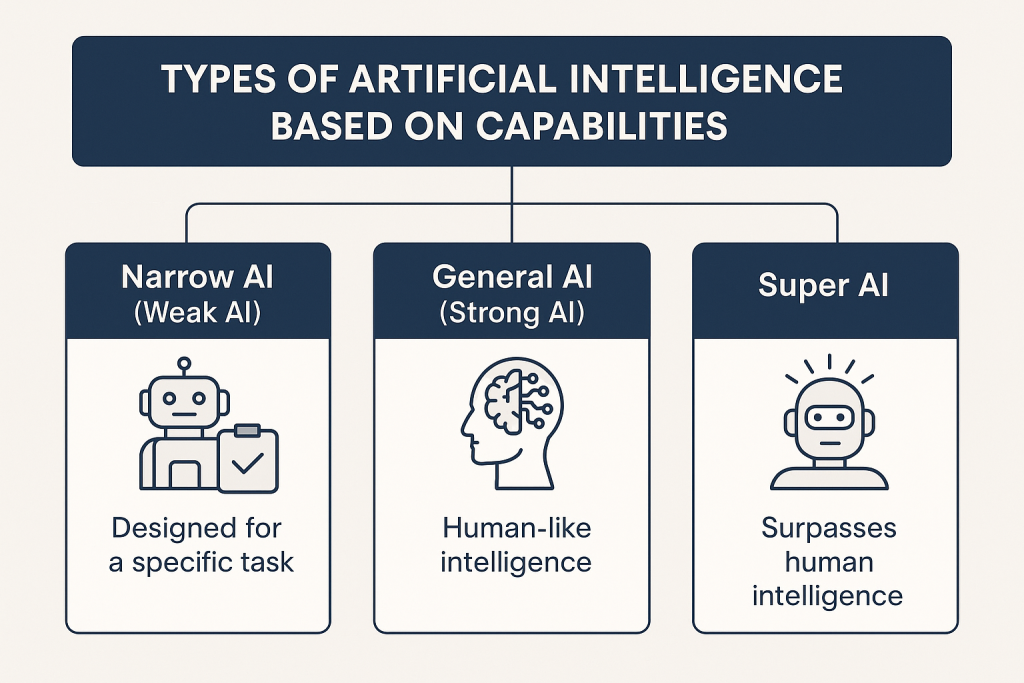
Imagine waking up to an alarm that adjusts itself based on how well you slept, sipping coffee brewed by a machine that knows your favorite blend, and driving to work in a car that avoids traffic before you even know there’s a jam ahead. Sounds futuristic? It’s not. It’s Artificial Intelligence — quietly running in the background of our lives. But here’s the twist: not all AI works the same way. To truly understand where technology is headed, you need to grasp the different types of Artificial Intelligence that shape our present and our future.
In this guide, we’ll break down AI in a simple, conversational way while also giving you the depth you need to stay ahead in today’s digital-first world.
At its core, Artificial Intelligence refers to machines that mimic human intelligence. These machines are designed to learn from data, adapt to new inputs, and perform tasks that once required human thinking.
The key pillars of AI include:
Today, AI powers search engines, recommendation systems, chatbots, predictive analytics, and even robotic process automation. But its capabilities can be categorized in two main ways: based on capabilities and functionality.
For a clearer distinction, check out the beginner’s guide to artificial intelligence which breaks these down simply and cleanly.
This is the type of AI most of us interact with every day. Narrow AI is designed to handle a specific task really well—but it cannot perform tasks outside its programmed function.
Imagine an AI system that thinks, learns, and understands the world just like a human. That’s the goal of General AI. It’s still a theoretical stage but represents machines that could perform any intellectual task a human can do.
This is the “sci-fi” version—Artificial Superintelligence that surpasses human intelligence in every possible way. It could analyze data, solve global problems, and innovate beyond human imagination.

These are the simplest types of AI. They don’t store memories or past experiences; they only react to the present situation.
This is the most common type of AI used today. These systems can use historical data to make better decisions.
This is where things get exciting. Theory of Mind AI is designed to understand human emotions, beliefs, and intentions. While still under research, this type of AI could revolutionize healthcare, education, and customer service.
The most advanced—and hypothetical—type of AI. A self-aware AI would have consciousness, emotions, and self-recognition.

Every category of AI functions through specific AI agents designed to handle tasks in unique ways. To explore how these agents operate and add value in real-world scenarios, take a look at our guide on Types of AI Agents: Benefits and Examples
AI isn’t just theory—it’s practical and transforming industries every day.
These applications highlight how AI technology is no longer optional—it’s a business necessity.
As powerful as AI is, it comes with challenges that businesses and society must address:
Responsible use, ethical frameworks, and regulations are critical to ensure AI benefits everyone.
The future of AI looks both exciting and uncertain. We’re moving from narrow AI towards systems with greater reasoning, personalization, and adaptability.
Key future trends include:
Businesses that embrace AI responsibly will not only survive but thrive in this fast-changing digital landscape.
Understanding the different types of Artificial Intelligence isn’t just for techies—it’s for everyone who interacts with technology. Whether it’s Narrow AI helping you find your next Netflix binge or the dream of Super AI reshaping industries, AI is redefining the way we live, work, and think.
Whether you’re a student, professional, or entrepreneur, Gignaati’s AI Online Courses make it easier than ever to understand, apply, and leverage artificial intelligence for success.
Artificial Intelligence is generally divided into two categories: based on capabilities (Narrow AI, General AI, and Super AI) and based on functionality (Reactive Machines, Limited Memory, Theory of Mind, and Self-Aware AI). Narrow AI and Limited Memory systems dominate today’s applications, while General and Super AI remain theoretical but represent future possibilities.
Narrow AI (Weak AI) performs a single specific task, such as voice assistants or recommendation engines. General AI (Strong AI) would match human intelligence, learning across domains and applying knowledge flexibly. Narrow AI is practical and widely used today, while General AI is still a theoretical concept researchers are striving to achieve.
Super AI refers to a hypothetical stage of artificial intelligence where machines surpass human intelligence in every area — creativity, decision-making, and problem-solving. While it doesn’t exist yet, Super AI is often linked to debates about ethics, safety, and control. It represents both the promise of solving global challenges and the risk of losing human oversight.
The four types of AI based on functionality are:
Most real-world applications use Narrow AI and Limited Memory AI. Examples include chatbots, voice assistants, fraud detection systems, self-driving cars, and recommendation engines. These systems focus on specific tasks, analyze past data, and improve outcomes, making them practical for industries like healthcare, finance, retail, and transportation.
AI is part of daily life in ways you may not notice. It powers search engines, virtual assistants, navigation apps, e-commerce recommendations, spam filters, and predictive text. In industries, AI supports medical imaging, automated trading, and logistics optimization. By analyzing data and learning patterns, AI systems help make daily decisions faster and smarter.
The main challenges of AI include data privacy risks, algorithmic bias, job automation concerns, transparency issues, and ethical debates. While AI can boost productivity and innovation, poorly managed systems may cause inequality, unfair outcomes, or lack of accountability. Responsible use, clear regulations, and human oversight are critical to addressing these challenges effectively.
The future of AI points toward more personalized, ethical, and human-centric applications. Trends include generative AI, sustainable AI for climate solutions, and collaboration between humans and machines. While we are moving closer to General AI, current progress focuses on making Narrow and Limited Memory AI smarter, safer, and more beneficial across industries.
Explore Gignaati.com – where top AI innovators showcase verified AI agents for real-world solutions.
© 2025 Gignaati is a product of Smartians.ai. All rights reserved.
Leave Your Comment